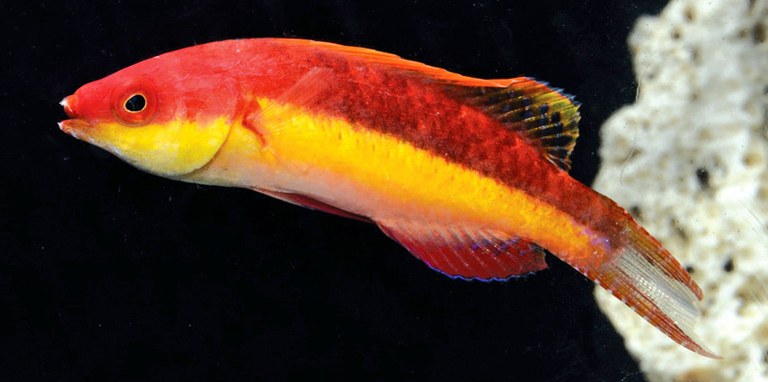Interestingly, when the scientists sequenced the mtDNA-barcode marker COI of C. greeni, they found it identical to the seqeunces of C. rubripinnis and C. aff. tonozukai from the Philippines, but C. greeni is markedly different than the other two species (both pigmentation and the shape of their tails). The authors of the Journal of Ocean Science Foundation paper suggest that this indicates “the new species has diverged recently and/or there is historic or episodic hybridization within the species complex.”
Distribution and habitat:
The new species is currently known only from the eastern Timor Sea, approximately 300 km northwest of Darwin, Australia and 300 km southwest of the Tanimbar Islands of Indonesia. It was collected and observed in depths of about 18–40 m. The habitat consists of sloping rubble bottoms with scattered low outcrops of rock or coral and occasional large coral outcrops. It co-occurs with several
other members of the genus including C. hygroxerus and four species of undetermined status that are related to C. cyanopleura (Bleeker, 1851); C. exquisitus Smith, 1957; C. punctatus Randall & Kuiter, 1989; and C. temminckii Bleeker, 1853.










0 Comments